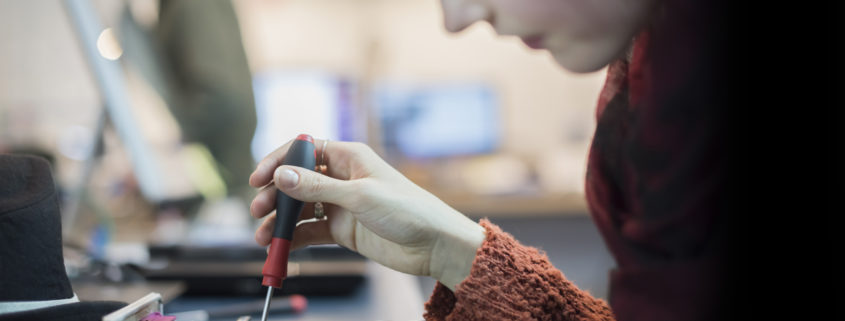How to place STEM in the real world
Article from tes: https://www.tes.com/news/how-place-stem-real-world-sponsored
Want to open pupils’ eyes to the wonder of Stem? Show them where their learning fits into real life, says Matt Pearson.
You’re in a lab and there’s been a dangerous chemical spill. With every second that passes, there is an increased likelihood that the seriousness of the situation increases. So how do you tackle the problem?
This is the kind of real-world scenario that explicitly locates the use of scientific knowledge outside of the classroom. Some pupils may struggle to see the relevance of learning about acids and bases, so setting the scene and asking them to imagine that they are scientists or facilities managers at a busy airport tackling a chemical spill can have a powerful impact. They can use their understanding and knowledge of chemical properties to identify the “mystery spill” from clues given to them, and then devise a plan for clearing it up, making concrete use of what can be an abstract topic. This manner of teaching through a scenario that makes tangible links with a pupil’s real-world experiences can help in the building of schema, and have a lasting impact upon learners.
Science is undoubtedly a compelling subject. The study of the processes that drive life, the very stuff that constitutes the world around us: is there any greater source from which to draw material that is rich and wondrous? But sometimes that can be the issue. Wondrous can mean abstract. And then abstract becomes detached. Detached runs the risk of being viewed as irrelevant. Enter every teacher’s least favourite questions: “Sir, when will this ever be useful for me?” “Miss, why do we need to learn about this?”
To some extent, I sympathise. It’s perhaps a tad optimistic to expect pupils to be fully engaged when a concept seems to have no clear real-world application. Personally, I think there is a lot to be gained from teaching in context. Sometimes theoretical content is best served by explicitly linking it to everyday experiences. This helps to make the abstract tangible. It also strengthens the links between areas of knowledge and aids long-term memory storage, as well as providing additional opportunities for that light-bulb moment for any students who didn’t get it the first time around.
Stem: real-world applications
Inspiration for real-world scenarios can be found anywhere. Take ABM UK’s Junior Engineering Engagement Programme (J.E.E.P.), for example. This four-session course takes abstract concepts that would be taught in most existing schemes of work and gives them a new lease of life by presenting them in a series of workshops with an accompanying field trip.
One example of a topic that J.E.E.P delivers in context is the theory of heat transfer by conduction and convection. Every student will have visited an airport or shopping centre; now ask them to put themselves in the shoes of a facility manager at a site like that. How does he or she apply the theory of heat transfer in keeping an even temperature throughout the site? What would the outcome be if cooling systems weren’t working?
Pupils could predict which areas of the precinct would warm up first, and devise plans to deal with this issue should it occur. Facility managers need to have a working understanding of electronic circuits, combining components in series and in parallel and with an array of sensory devices. This could be combined with the cooling system failure scenario: can pupils produce a combination of components that triggers an alarm when the temperature surpasses a chosen degree?
Or, say you want to encourage pupils to think about the properties of various different materials; you don’t even have to leave the shopping precinct. For example, given a list of materials or their properties, you could ask students to choose the appropriate metal for an elevator cable system, leading to a deeper understanding of terms such as ultimate tensile stress, ductility and Young’s modulus.
Alternatively, demonstrate the effect of double or triple glazing and cavity wall insulation by asking pupils to investigate the effect of trapping a layer of air (or other materials) between layers of glass. What effect would this have on a real-life facility? Ask students to list the pros and cons of types of insulation. Some facilities also have garden-like areas where plants and shrubs grow, such as Changi Airport in Singapore. Knowledge of the conditions necessary for plants to flourish allows pupils to design an area in a complex with this role in mind.
Teaching about renewable energy sources also takes on a whole new lease of life when pupils are given a specific location (perhaps somewhere in the local area that they are familiar with) and asked to select appropriate energy-producing methods. Where might they build a wind farm nearby, for example? If they live in an urban setting with limited space, would solar panels be an option? What about tidal power? The hallmark of a good engineer is the ability to employ specialist knowledge across a range of contexts; a skill that can be nurtured and honed by exposing pupils to real-world scenarios in this way.
Science learning in context
Learning in context can take a variety of forms. Some schools take the route of teaching a topic in a conventional manner and then dedicating time during schemes of work to exploring careers to which the material might relate. Others use extracurricular opportunities to make the links between taught material and the outside world.
External speakers can be useful to give a more authentic learning experience – the Stem Ambassadors scheme is ideal for this. Stem Ambassadors come from a wide range of disciplines and backgrounds, from mechanical engineers to scientists researching topics such as noise and vibration. Schools can invite ambassadors with an appropriate specialism to come in and speak to pupils about their careers, and introduce the context that real-world scenarios are explored in during the lessons.
Cafe Sci in Schools is another idea I have seen successfully implemented in a secondary school, with pupils even taking responsibility for organising the speakers themselves. Under this scheme, pupils meet working scientists in a relaxed “café-style” atmosphere, in school but, crucially, not in class. The speaker talks about their work for about 15 minutes, which should relate to the topic the students are learning about, and then they can ask questions. This is another way to build an authentic setting for use in the classroom.
Other schools make use of project-based tasks or extended enquiry exercises to enhance learning experiences in the classroom. The Shell Bright Ideas competition runs annually with supporting materials and can be adapted with ease to fit into a longer or shorter period. The competition encourages students to think about challenges that cities will face in the near future and to develop innovative ideas that could help deal with them.
Alternatively, for ideas about adapting existing activities in a scheme of work, ABM UK’s Junior Engineering Engagement Programme (J.E.E.P.) includes a standalone syllabus that could be implemented wholesale or used as inspiration to develop existing curriculum plans.
Building up the layers of knowledge and then teaching a student to locate where it can be applied in both existing and new ways empowers them to see the world through new eyes. Great teaching enables young people to reach their potential. I think it also goes some way towards helping them to find their place in society. Providing students with the knowledge and intellectual tools to find their way in life is a key responsibility of all teachers.
Matt Pearson is a science adviser and physics tutor in the North West of England



